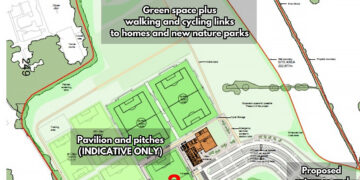A RADAR developed by University of Reading scientists could end up in space.
WIVERN, also known as the Wind Velocity Radar Nephoscope, is one of four ideas recently shortlisted by the European Space Agency (ESA) to be sent to the stars.
The radar, which measures wind within clouds to help predict extreme weather, could be used in the 11th Earth Explorer mission and measure wind over the entire planet.
Professor Anthony Illingworth, atmospheric physicist at the University and leading the WIVERN project, said: “Weather forecasting has come a long way in recent decades, but we need observations of the winds inside hurricanes and the winter storms as they develop over the Atlantic to better predict when and where they will hit Europe, so that teams can be mobilised and be ready in time to take action in the regions likely to be affected.”
The radar was one of 15 proposals submitted to the ESA and will now go through a series of studies to see if it could feasibly be used in the space mission, with further selection to take place in 2023 and 2025.
The mission is scheduled for launch in 2031 or 2032.














































